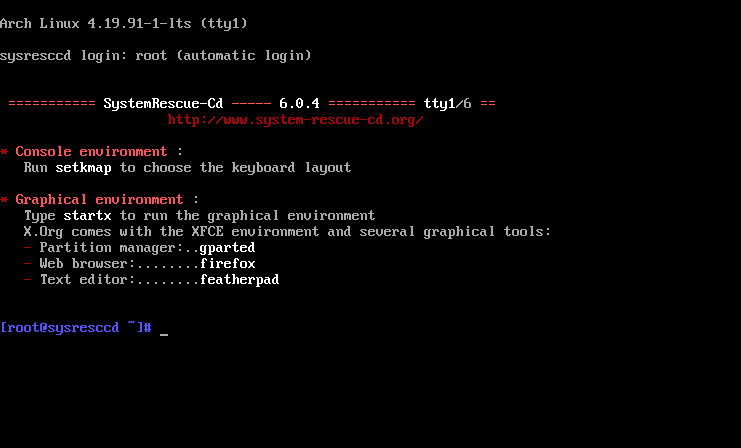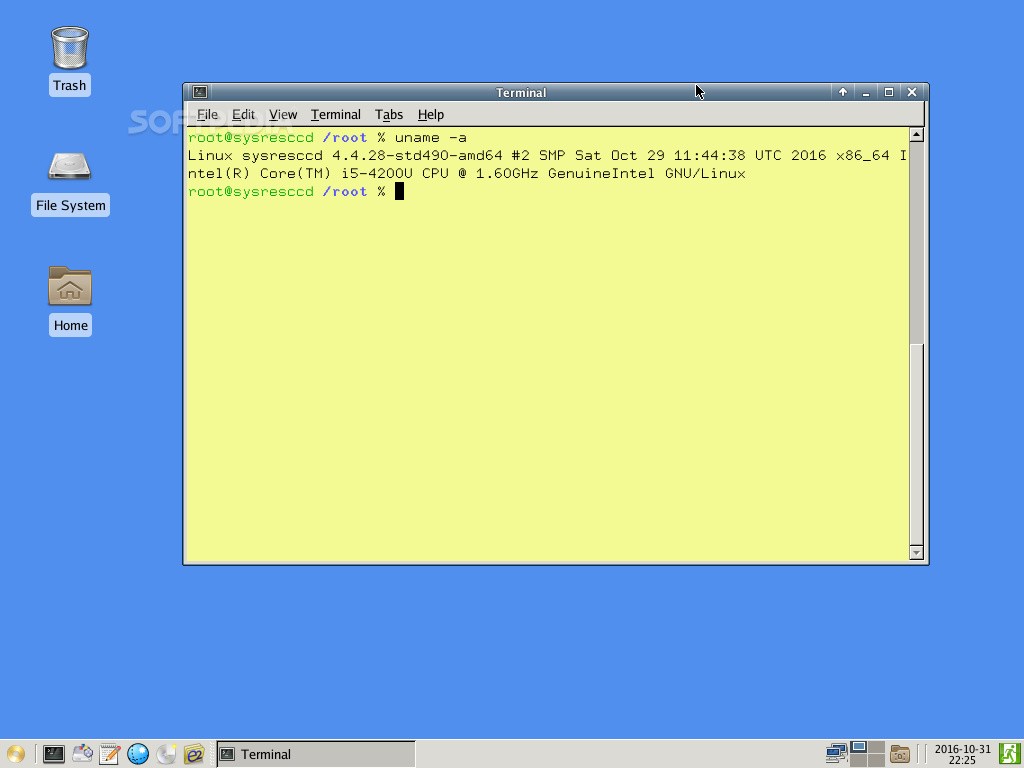
- INSTALL SYSTEMRESCUECD EXT4 HOW TO
- INSTALL SYSTEMRESCUECD EXT4 INSTALL
- INSTALL SYSTEMRESCUECD EXT4 UPDATE
- INSTALL SYSTEMRESCUECD EXT4 PASSWORD
- INSTALL SYSTEMRESCUECD EXT4 DOWNLOAD
Think on this very special case: have no Linux installed on the HDD, but use Grub2 as bootloader. Debian or Ubuntu based systems sudo update-grub Fedora Grub2 based systems sudo grub2-mkconfig -o /boot/grub2/grub.cfg Most Grub2 based systems including Debian based ones sudo grub-mkconfig -o /boot/grub/grub.cfg SuSE Grub1 based systemsĪlthough there are some unofficial scripts for this task the official way of changing them is: If your distribution does not use sudo please run the command without the initial sudo and as a root user.
INSTALL SYSTEMRESCUECD EXT4 UPDATE
You know, Gnu/Linux or Windows is not booting as it always happened.Īnother alternative is using Rescatux which has an Update Grub option which tries to take care of all the possible situations. Just go back to this step if after Restoring grub step (and rebooting) you see your former grub but somehow your Grub menu does not work as expected. We will start just by the ones we think are the most common ones.Īs I said this before this step is strictly not needed so you can skip it. We will try to cover most of the options. There are different ways of updating Grub configuration depending on you using Grub legacy, current Grub (Grub2), Debian based distributions, Fedora based distributions or custom distributions. Either because you have added a Windows partition or because your Gnu/Linux partition is in a different partition (That latter case usually needs /etc/fstab to be edited too but that would be another howto.).

Update Grub configurationĪlthough strictly not needed is a good idea at this point to re-create the Grub configuration files. When you reboot Grub menu should be alive again. That means that the installation was successful. The most probable output for the command is: Installation finished.
INSTALL SYSTEMRESCUECD EXT4 PASSWORD
(where you might have to write your user password blindly or not) as a admin user or: grub-install /dev/sda In the next command you will need to replace sda with your hard disk.Įither you run: sudo grub-install /dev/sda
INSTALL SYSTEMRESCUECD EXT4 INSTALL
Now we are going to install grub back to the MBR, which it is what most people to do. In any case we recommend to check hard disk size next to Disk /dev/sdX at the output’s beginning so that you make sure that you select the exact hard disk that boots initially in your machine. That means that your hard disk (as it’s seen above) it’s sda. In most of the cases you will see that you have a Linux system partition sda5, sda4, or whatever sdaX. Tamaño E/S (mínimo/óptimo): 512 bytes / 512 bytesĭispositivo Inicio Comienzo Fin Bloques Id Sistema Tamaño de sector (lógico / físico): 512 bytes / 512 bytes Unidades = sectores de 1 * 512 = 512 bytes (where you will have to write your user password blindly) as a admin user or: fdisk -luĪ possible output might be: Disco /dev/sda: 21.5 GB, 21474836480 bytesĢ55 cabezas, 63 sectores/pista, 2610 cilindros, 41943040 sectores en total Super Grub2 Disk – Detect any Operating System – Linux kernels detected Find out what your hard disk and root partition devices areįrom your installed system you need to run either: sudo fdisk -lu Super Grub2 Disk main screen Select the OS you want to bootĪmong the different Operating system and kernels select the one that identifies your system. Select Detect any Operating System option. Super Grub2 Disk main screen Detect any Operating System Use again the down arrow key and then return key to select Super Grub2 Disk entry.įinally you get into Super Grub2 Disk screen. Then you get into GRUB Bootable ISOs or Windows XP screen. YUMI Boot – GRUB Bootable ISOs or Windows XP selected

You have to select GRUB Bootable ISOs or Windows XP by using down arrow key and then return key. When you boot thanks to YUMI by default is going to boot into your first hard disk. When you boot in Super Grub2 Disk you will get into Super Grub2 Disk menu without the need of doing anything. Super Grub2 Disk – Press return at boot Booting with CDROM or with USB built with dd
INSTALL SYSTEMRESCUECD EXT4 DOWNLOAD
Wizard steps to perform Download Super Grub2 Disk Put Super Grub2 Disk into a media Boot from media You can find more information about what problems you can solve with this wizard and what you get after performing the Wizard steps at: Wizard – Restore Grub .
INSTALL SYSTEMRESCUECD EXT4 HOW TO
This wizard explains step by step how to restore Grub to your machine thanks to Super Grub2 Disk and some extra commands in the command line.




 0 kommentar(er)
0 kommentar(er)
